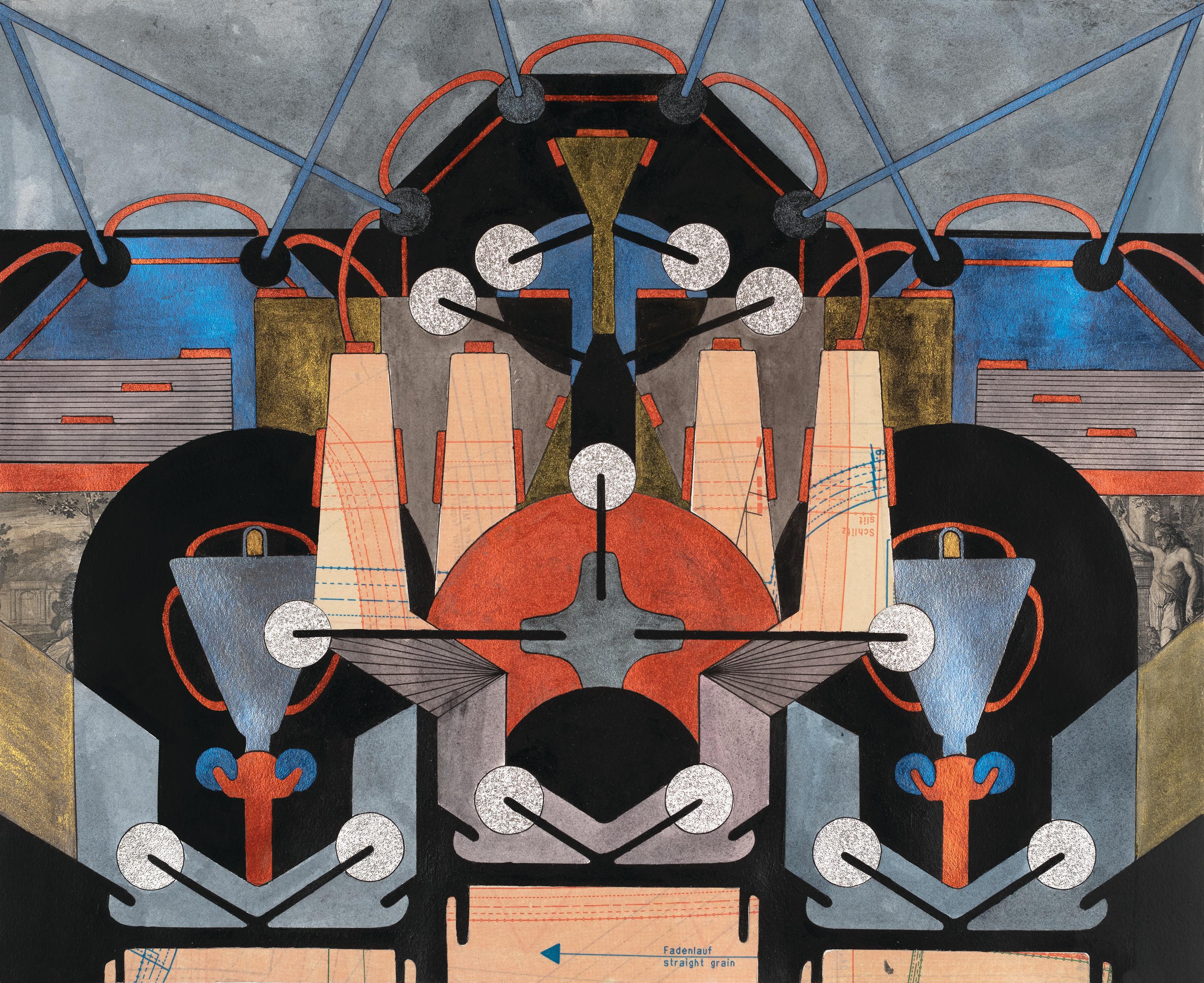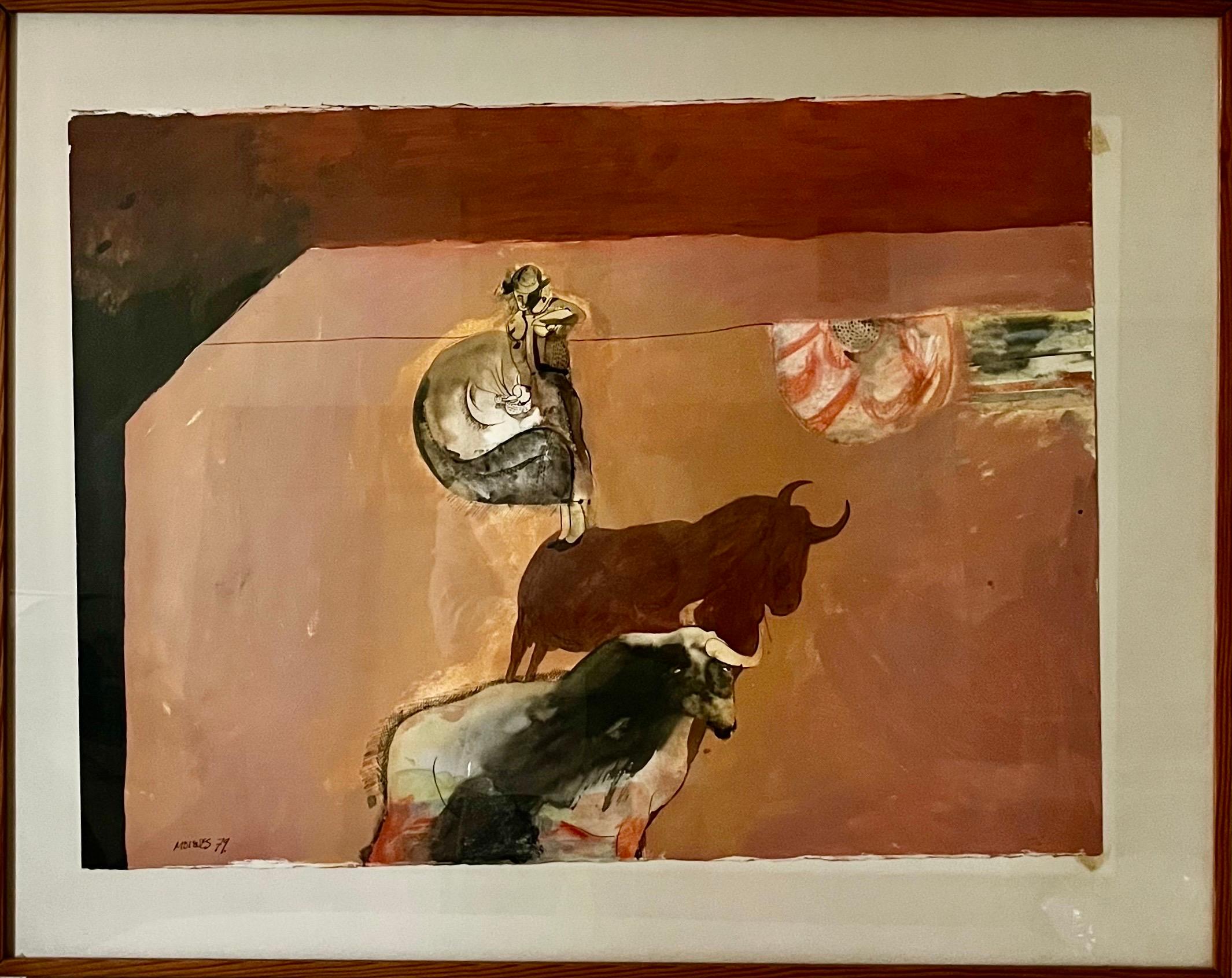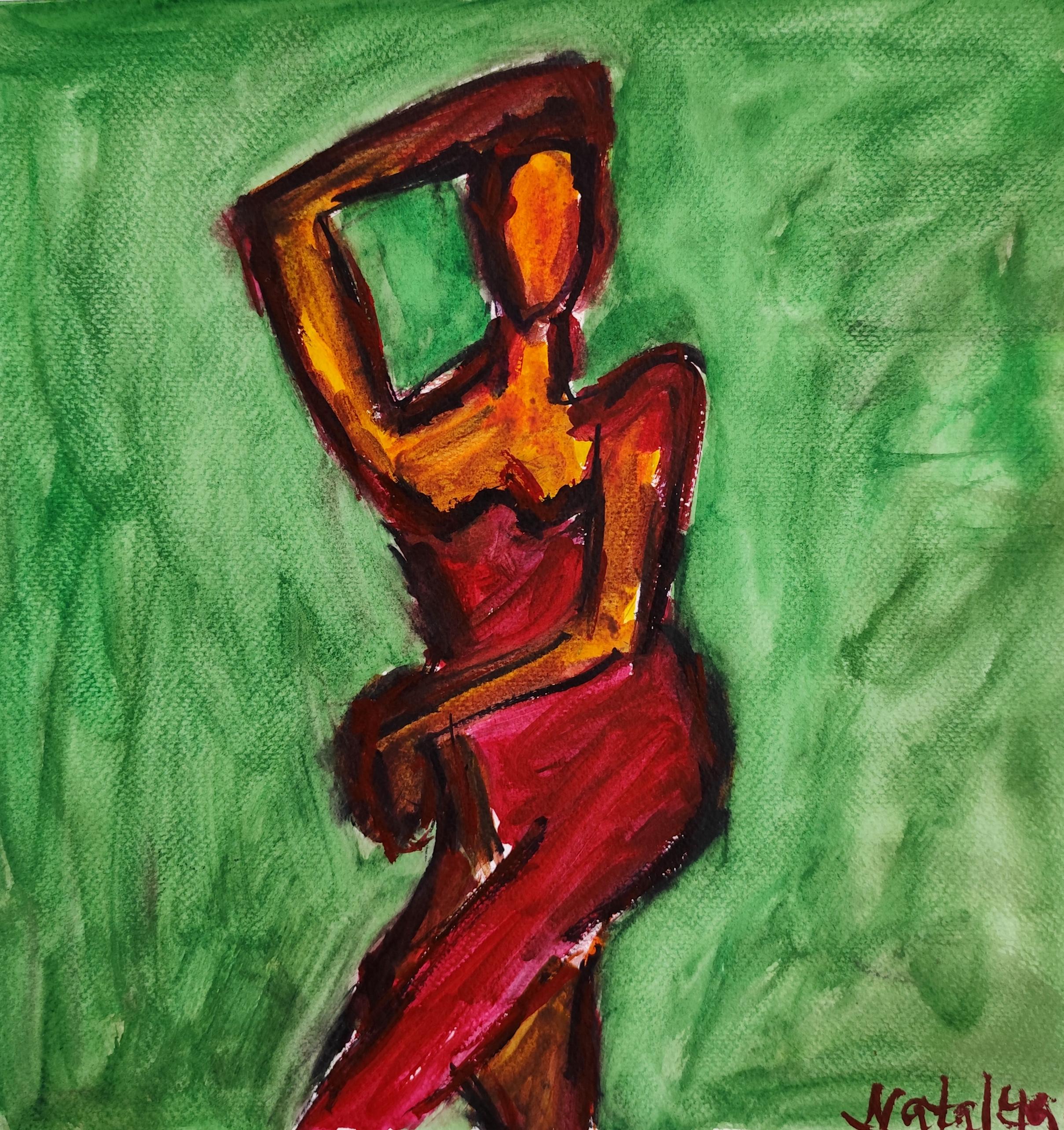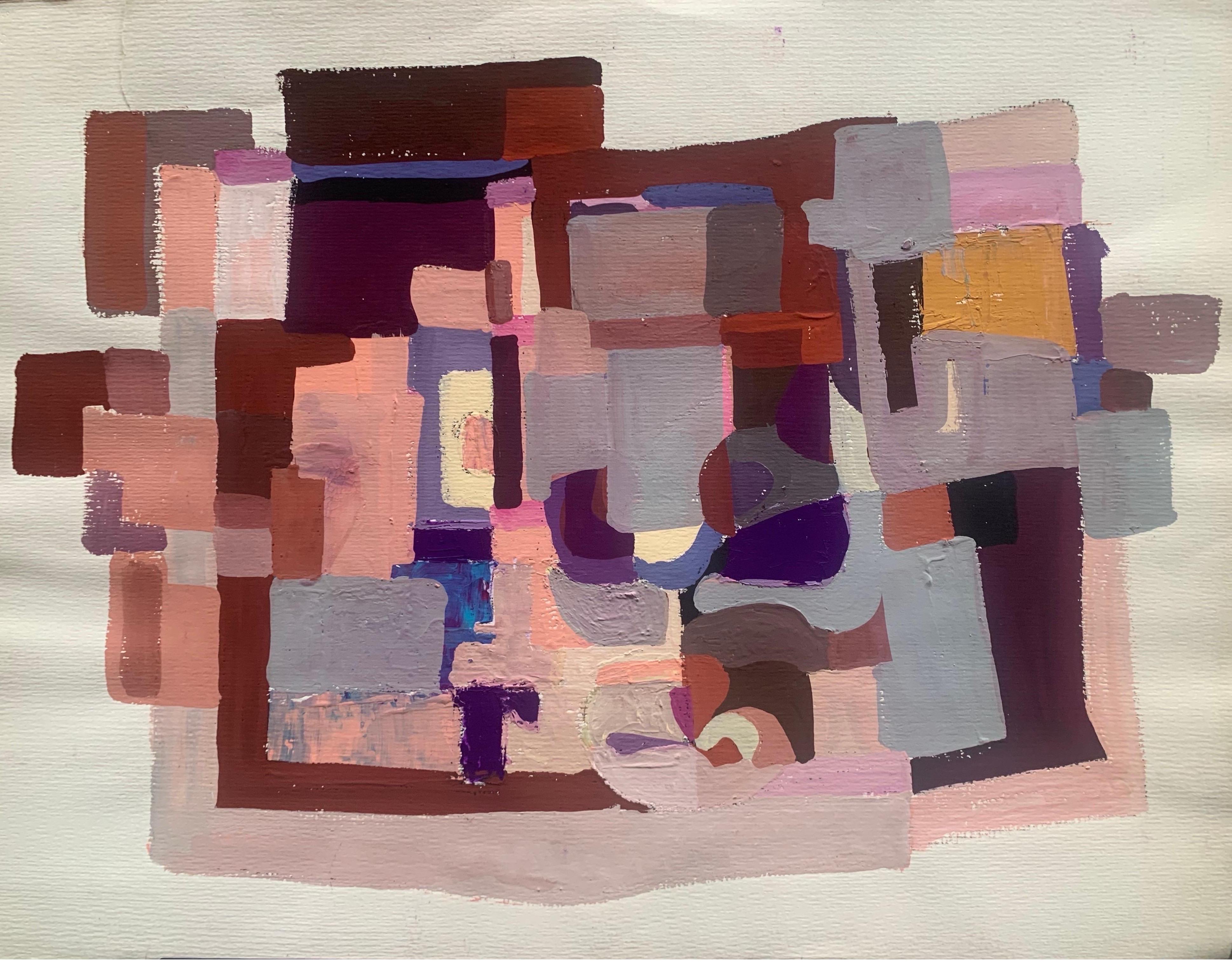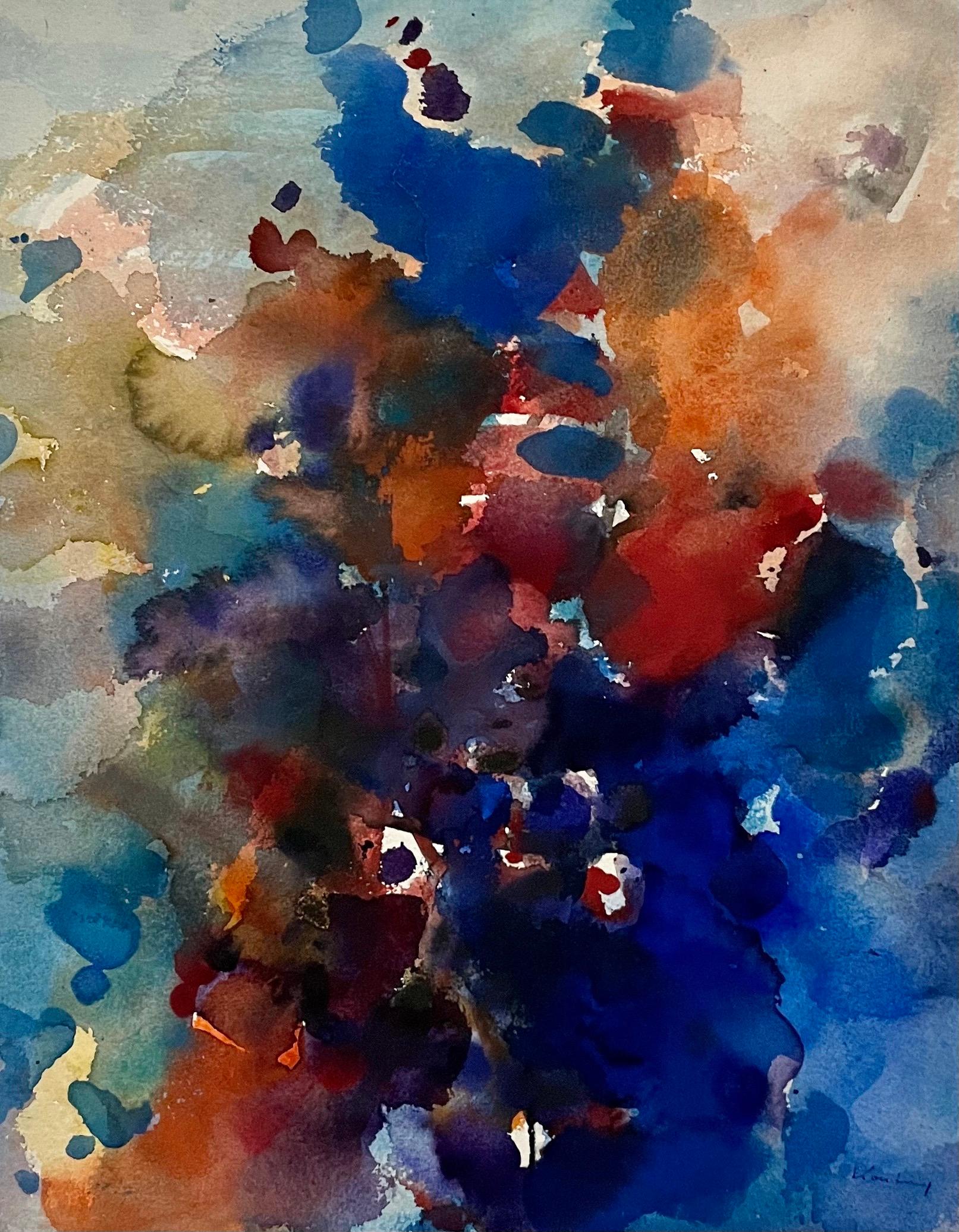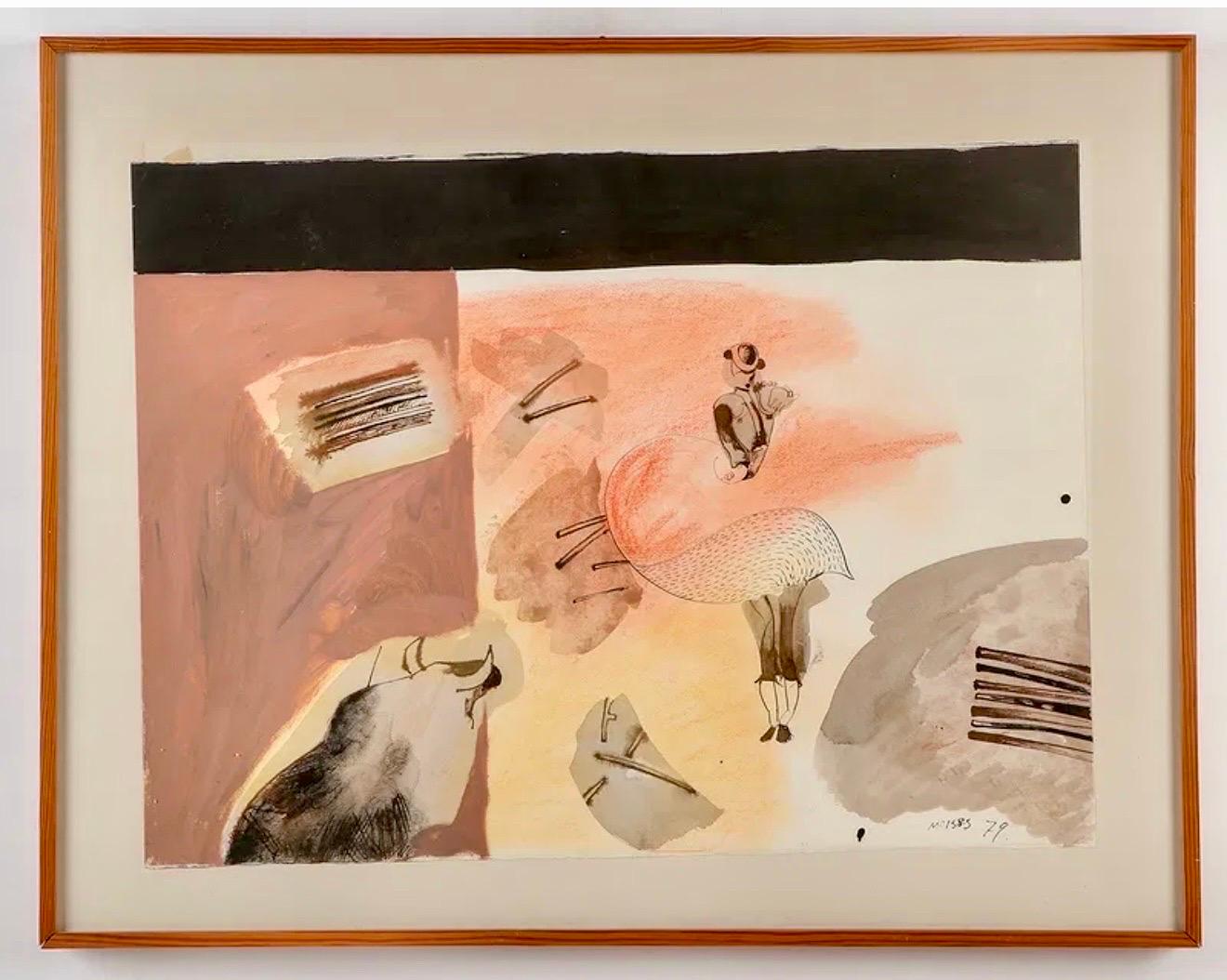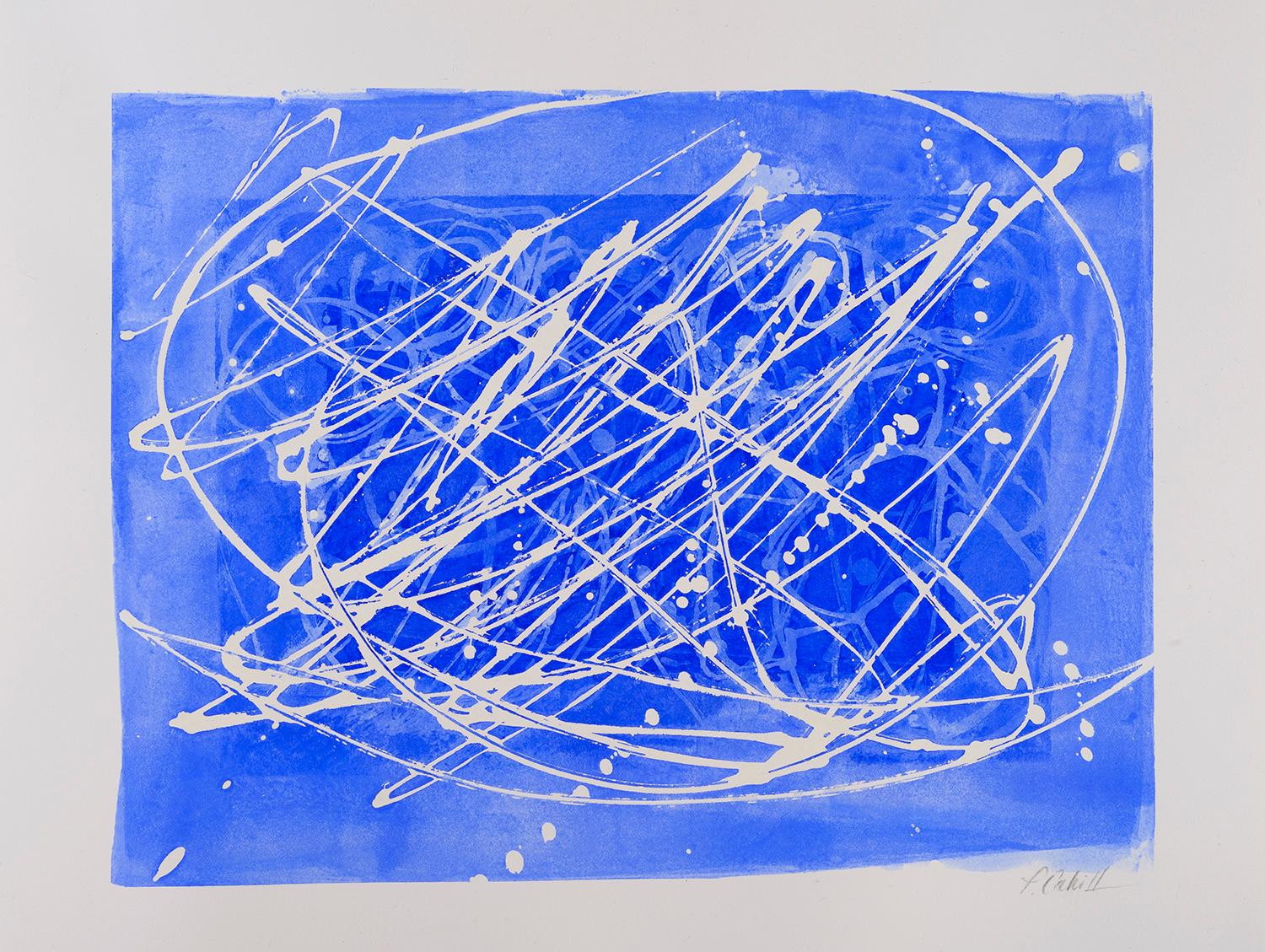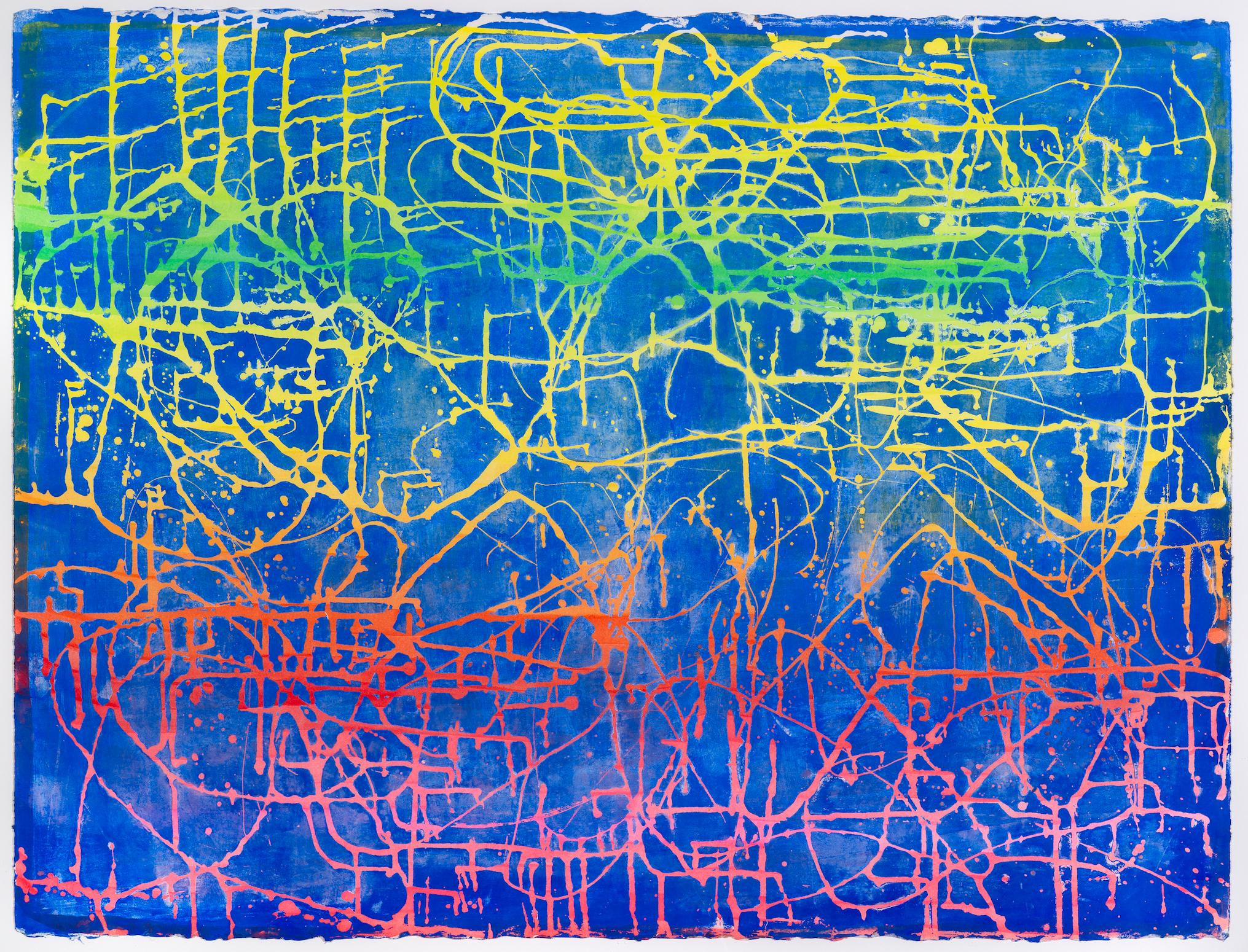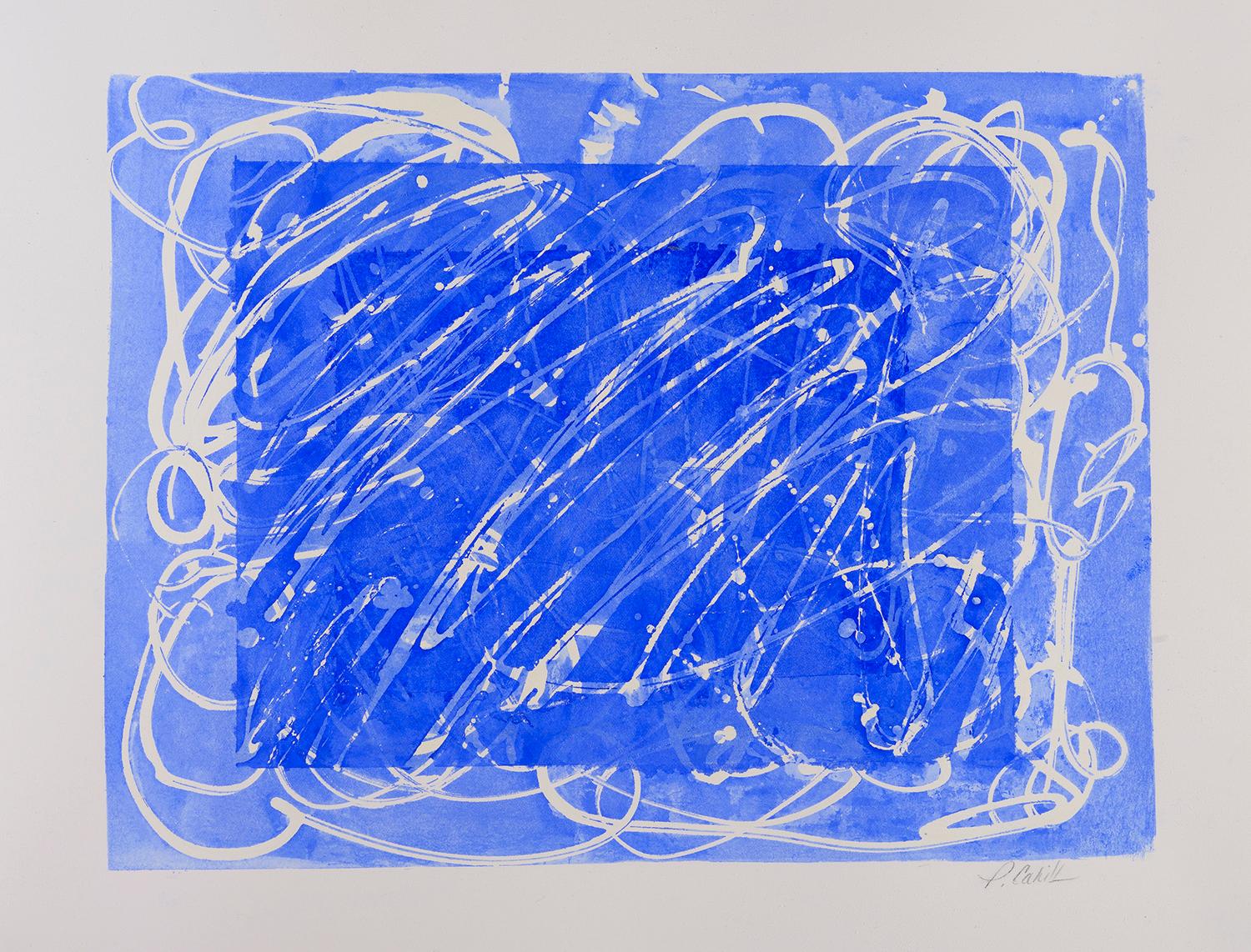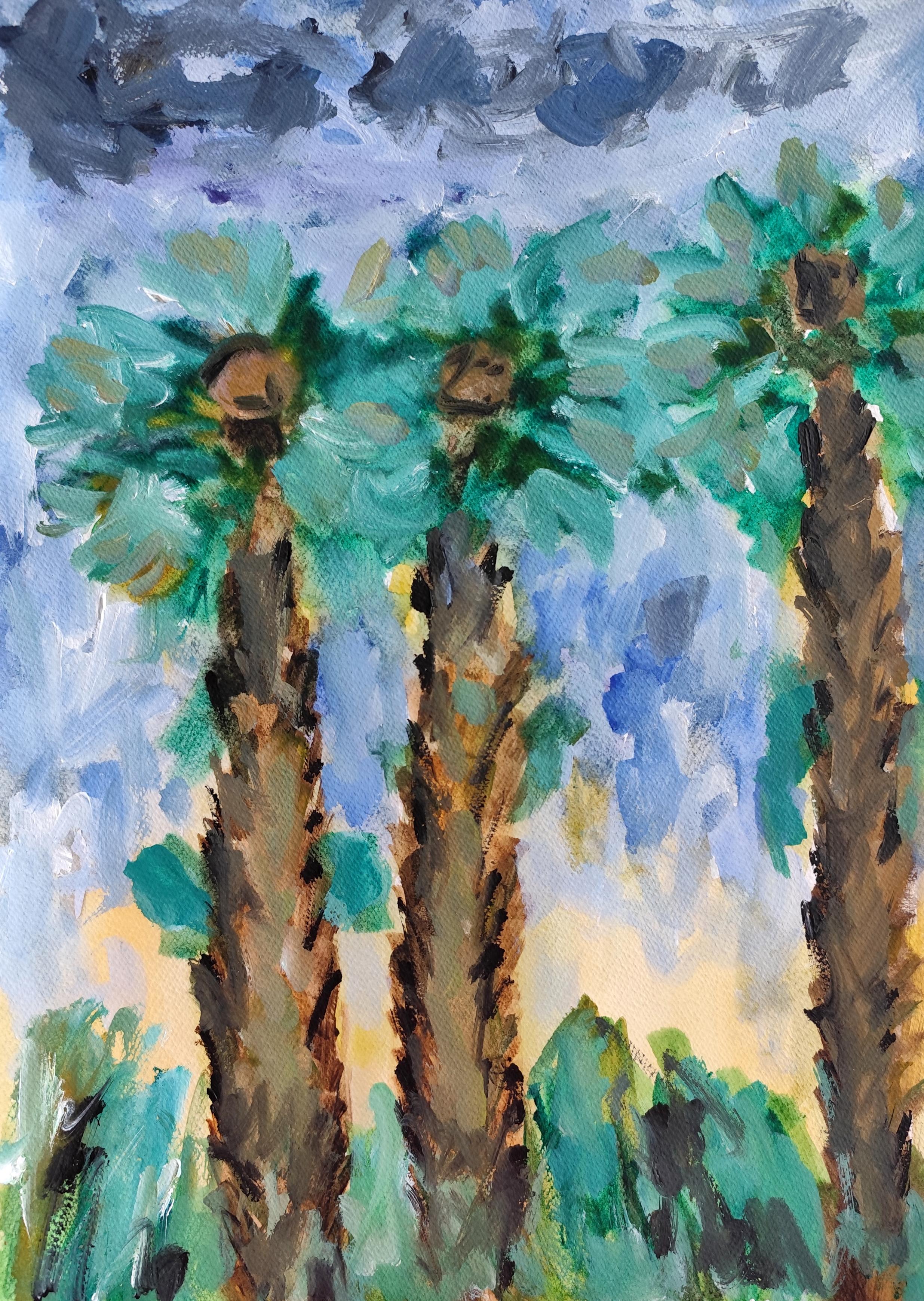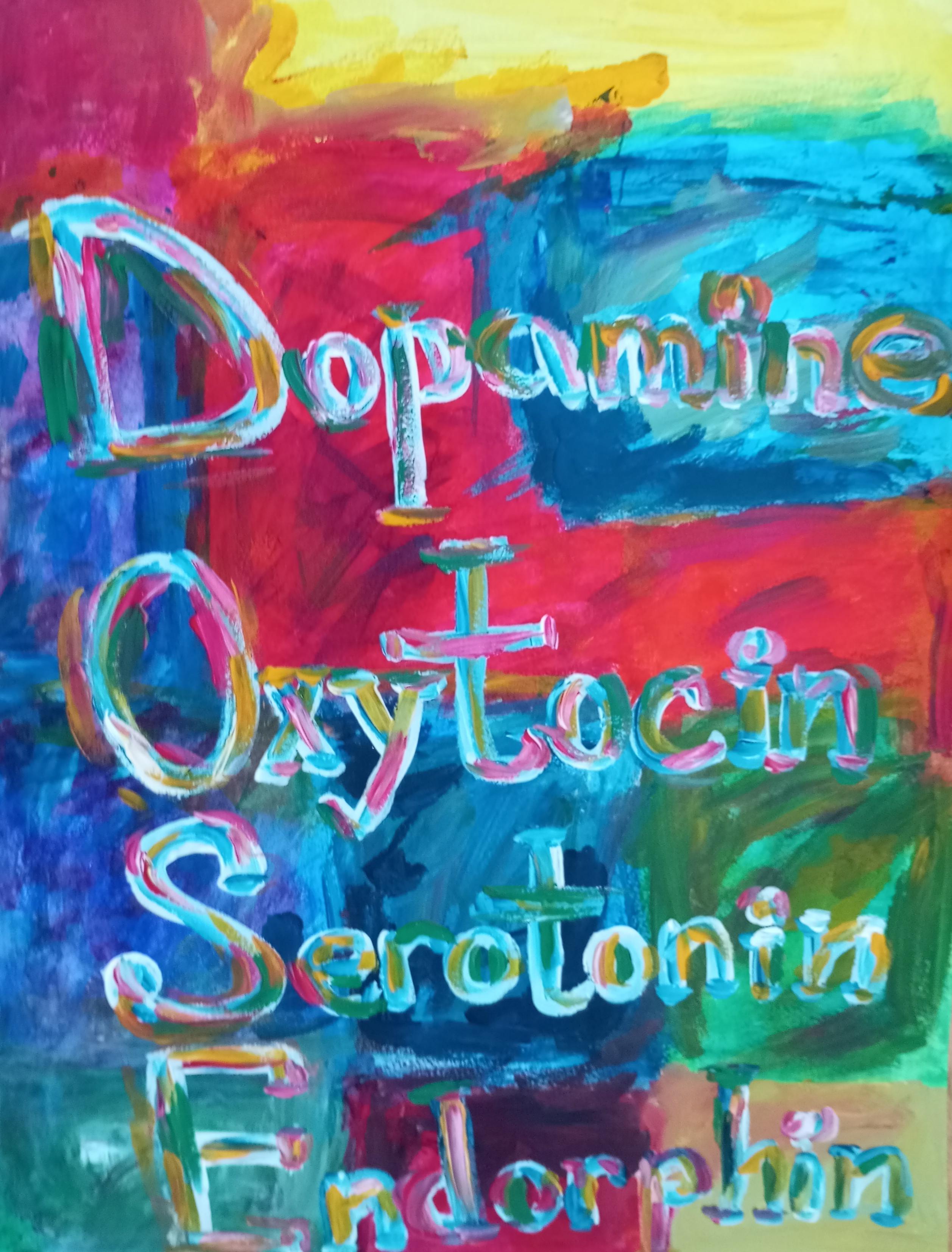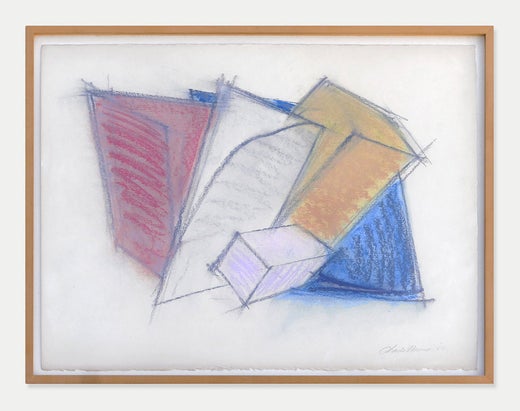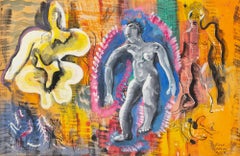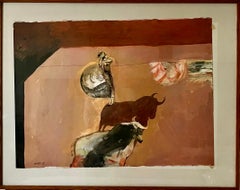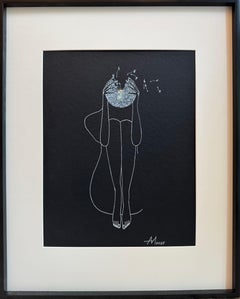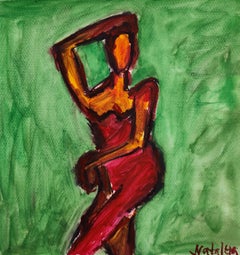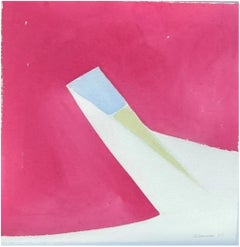
"Alizarin Orionids" Charles Hinman, Work on Paper, Abstract forms
View Similar Items
Want more images or videos?
Request additional images or videos from the seller
1 of 7
Charles Hinman"Alizarin Orionids" Charles Hinman, Work on Paper, Abstract forms2003
2003
$2,500List Price
About the Item
- Creator:Charles Hinman (1932, American)
- Creation Year:2003
- Dimensions:Height: 12 in (30.48 cm)Width: 12 in (30.48 cm)
- More Editions & Sizes:Unique workPrice: $2,500
- Medium:
- Movement & Style:
- Period:
- Framing:Frame IncludedFraming Options Available
- Condition:
- Gallery Location:New York, NY
- Reference Number:1stDibs: LU1841214452832
Charles Hinman
Charles Hinman (born 1932) is an American artist renowned for pioneering the use of three-dimensional shaped canvases. Born in Syracuse, New York, Hinman attended Syracuse University, where he earned a Bachelor of Fine Arts in 1955. He initially pursued a career as a professional baseball player before an arm injury led him to focus fully on art. Hinman gained recognition in the mid-1960s for his innovative use of shaped canvases, which explore the interplay between real and illusory space. His works, often characterized by their geometric, sculptural forms, project from the wall and create a dynamic interaction between light, color, and shadow. This fusion of painting and sculpture places him at the forefront of Minimalism and shaped-canvas art movements. His early exhibitions at the Sidney Janis Gallery and his first solo show at Richard Feigen Gallery in 1964 helped establish his reputation. Throughout his career, Hinman’s works have been included in prominent exhibitions and acquired by major institutions, including the Museum of Modern Art (MoMA), the Whitney Museum of American Art, and the Los Angeles County Museum of Art. He has also been the recipient of prestigious awards, such as a Guggenheim Fellowship and multiple Pollock-Krasner Foundation grants. In recent years, his works continue to be celebrated for their exploration of dimensionality and form, with exhibitions like "The Shaped Canvas Revisited" in 2014 reaffirming his influence on modern art
About the Seller
5.0
Platinum Seller
Premium sellers with a 4.7+ rating and 24-hour response times
Established in 2022
1stDibs seller since 2022
119 sales on 1stDibs
Authenticity Guarantee
In the unlikely event there’s an issue with an item’s authenticity, contact us within 1 year for a full refund. DetailsMoney-Back Guarantee
If your item is not as described, is damaged in transit, or does not arrive, contact us within 7 days for a full refund. Details24-Hour Cancellation
You have a 24-hour grace period in which to reconsider your purchase, with no questions asked.Vetted Professional Sellers
Our world-class sellers must adhere to strict standards for service and quality, maintaining the integrity of our listings.Price-Match Guarantee
If you find that a seller listed the same item for a lower price elsewhere, we’ll match it.Trusted Global Delivery
Our best-in-class carrier network provides specialized shipping options worldwide, including custom delivery.More From This Seller
View All"Alizarin Orionids" Charles Hinman, Work on Paper, Red Geometric Abstraction
By Charles Hinman
Located in New York, NY
Charles Hinman
Alizarin Orionids, 2003
Signed and dated lower right
Watercolor on paper
12 x 12 inches
Throughout his long career, Charles Hinman has collapsed the divide between p...
Category
Early 2000s Abstract Abstract Paintings
Materials
Paper, Watercolor
"Untitled" Norman Bluhm, circa 1960 Abstract Black and White Composition
By Norman Bluhm
Located in New York, NY
Norman Bluhm
Untitled, circa 1960
Signed lower right
Oil on paper laid down on board
22 x 30 inches
Norman Bluhm (1921-1999) was an American Abstract Expressionist celebrated for c...
Category
1960s Abstract Abstract Paintings
Materials
Paper, Oil
"Composition with Figure, " Irene Rice Pereira
By Irene Rice Pereira
Located in New York, NY
Irene Rice Pereira
Composition with Figure, 1951
Inscribed, signed and dated Salford/Pereira 2/51 (lr); inscribed I Rice Pereira/2669 Great Clowes St/Sa...
Category
1950s Abstract Abstract Paintings
Materials
Paper, India Ink, Casein
"Cronus Dining" David Hare, Yellow & White Mythological Surrealist Composition
By David Hare
Located in New York, NY
David Hare
Cronus Dining, 1968
Graphite, acrylic, paper collage on board
44 x 34 inches
“Freedom is what we want,” David Hare boldly stated in 1965, but then he added the caveat, “and what we are most afraid of.” No one could accuse David Hare of possessing such fear. Blithely unconcerned with the critics’ judgments, Hare flitted through most of the major art developments of the mid-twentieth century in the United States. He changed mediums several times; just when his fame as a sculptor had reached its apogee about 1960, he switched over to painting. Yet he remained attached to surrealism long after it had fallen out of official favor. “I can’t change what I do in order to fit what would make me popular,” he said. “Not because of moral reasons, but just because I can’t do it; I’m not interested in it.”
Hare was born in New York City in 1917; his family was both wealthy and familiar with the world of modern art. Meredith (1870-1932), his father, was a prominent corporate attorney. His mother, Elizabeth Sage Goodwin (1878-1948) was an art collector, a financial backer of the 1913 Armory Show, and a friend of artists such as Constantin Brancusi, Walt Kuhn, and Marcel Duchamp.
In the 1920s, the entire family moved to Santa Fe, New Mexico and later to Colorado Springs, in the hope that the change in altitude and climate would help to heal Meredith’s tuberculosis. In Colorado Springs, Elizabeth founded the Fountain Valley School where David attended high school after his father died in 1932. In the western United States, Hare developed a fascination for kachina dolls and other aspects of Native American culture that would become a recurring source of inspiration in his career.
After high school, Hare briefly attended Bard College (1936-37) in Annandale-on-Hudson. At a loss as to what to do next, he parlayed his mother’s contacts into opening a commercial photography studio and began dabbling in color photography, still a rarity at the time [Kodachrome was introduced in 1935]. At age 22, Hare had his first solo exhibition at Walker Gallery in New York City; his 30 color photographs included one of President Franklin Roosevelt.
As a photographer, Hare experimented with an automatist technique called “heatage” (or “melted negatives”) in which he heated the negative in order to distort the image. Hare described them as “antagonisms of matter.” The final products were usually abstractions tending towards surrealism and similar to processes used by Man Ray, Raoul Ubac, and Wolfgang Paalen.
In 1940, Hare moved to Roxbury, CT, where he fraternized with neighboring artists such as Alexander Calder and Arshile Gorky, as well as Yves Tanguy who was married to Hare’s cousin Kay Sage, and the art dealer Julian Levy. The same year, Hare received a commission from the American Museum of Natural History to document the Pueblo Indians. He traveled to Santa Fe and, for several months, he took portrait photographs of members of the Hopi, Navajo, and Zuni tribes that were published in book form in 1941.
World War II turned Hare’s life upside down. He became a conduit in the exchange of artistic and intellectual ideas between U.S. artists and the surrealist émigrés fleeing Europe. In 1942, Hare befriended Andre Breton, the principal theorist of surrealism. When Breton wanted to publish a magazine to promote the movement in the United States, he could not serve as an editor because he was a foreign national. Instead, Breton selected Hare to edit the journal, entitled VVV [shorth for “Victory, Victory, Victory”], which ran for four issues (the second and third issues were printed as a single volume) from June 1942 to February 1944. Each edition of VVV focused on “poetry, plastic arts, anthropology, sociology, (and) psychology,” and was extensively illustrated by surrealist artists including Giorgio de Chirico, Roberto Matta, and Yves Tanguy; Max Ernst and Marcel Duchamp served as editorial advisors.
At the suggestion of Jacqueline Lamba...
Category
1960s Abstract Abstract Paintings
Materials
Paper, Acrylic, Graphite
"Cronus Asleep in the Cave" David Hare, Surrealist Mythological Composition
By David Hare
Located in New York, NY
David Hare
Cronus Asleep in the Cave, 1971
Acrylic, ink wash, graphite, paper collage on paper on board
26 x 35 inches
“Freedom is what we want,” David Hare boldly stated in 1965, b...
Category
1970s Abstract Abstract Paintings
Materials
Acrylic, Paper, Ink, Graphite
"Erotic #1 (Cronus Sex)" David Hare, Surrealist Abstract Composition
By David Hare
Located in New York, NY
David Hare
Erotic #1 (Cronus Sex), 1970
Acrylic and paper collage on linen
68 x 51 inches
“Freedom is what we want,” David Hare boldly stated in 1965, but then he added the caveat, ...
Category
1970s Abstract Abstract Paintings
Materials
Linen, Paper, Acrylic
You May Also Like
"Pious Pistons" Painting w/ collage, metallic paint, foil, patternmaking paper
Located in New York, NY
This mixed media collage has a geometric stylistic look of Futurism and Art Deco, created with handpainted metallic colors. ink, watercolor, origami paper, patternmaking paper, foil....
Category
2010s Abstract Geometric Abstract Paintings
Materials
Metal, Foil
Mexican Abstract Watercolor, Ink, Pastel Bullfight Painting Moises Zabludovsky
Located in Surfside, FL
Moises Zabludovsky (Mexican, 1959-)
Bull Fight
Mixed Media Work on paper, watercolor; ink and pastel on paper
1979
Hand signed and dated.
Dimensions: Frame: 28.5 X 36.5. Image: 22.5 X 30
Abstract Modernist Mexican bullfighting image.
Born in Mexico City. His first training in art was in 1969 when he started working with Silvia Gonzalez and later on in the Arcai Atelier in Paris. At 18, he held his first exhibition at the Museo de Arte Moderno of Mexico City and he went on to display his work at the International Biennale of the Bronx Museum in New York City.
He grew up around the Mer Kup Gallery, run by his maternal grandmother, Merl de Kuper, where he presented his work in several group exhibitions and three solo shows (1979, 1981, and 1985). She was a champion of many important mexican modernist artists including
artists like Pedro friedeberg, Feliciano Bejar, Mathias Goeritz, Diego Rivera, Sebastián, and José Luis Cuevas.Moises Zabludovsky exhibited at the National Center for the Arts in 2011 and at the Museo El Eco of the National Autonomous University of Mexico. He has exhibited paintings and sculptures at the Museum of Modern Art, the Jose Luis Cuevas Museum, Metropolitana in Mexico City.
He has successful shows at prominent art galleries like the Miro Gallery in Monterrey, Palacio de Bellas Artes and Museo Carrillo Gil in Mexico City. He also had some international shows in Florida and Latin America. In 1982 he was awarded a degree in graphic design from Parsons University. He has received numerous awards and exhibited widely since the early 1990's. He is known both for his oil painting as well as for his ceramic and bronze bullfighting sculpture.
In 1978, he received an honorable mention at the First Ibero-American Painting Biennial, where Carlos Merida and Rufino Tamayo were on the jury.
He was part of the Emerging Decade generation whose members participated in the exhibitions bearing that name at the Museo Universitario del Chopo in 1984 and 1994, the latter titled An Emerging Decade, a Decade Later . He also participated in the Salón dès Aztecs, a renowned alternative space for Mexican art
In the show Nuevas tendencias (New Trends) at the Museum of Modern Art in Mexico City. That same year, he also exhibited at the International Biennial at the Bronx Museum in New York. He continued his studies at the Metropolitan University of Mexico City and simultaneously exhibited at various galleries and museums: the Mer-Kup Gallery and the Miró Gallery in Monterrey, Nuevo León; the Palacio de Bellas Artes; the Carrillo Gil Art Museum; and, outside the country, in Florida and at the
Traveling Young Art Exhibition organized by the Mexican Ministry of Foreign Affairs.
as well as in art galleries in Mexico and the United States.
His father was the famous professor and architect Abraham Zabludovsky known for his brutalist architecture masterpieces among them the iconic Museo Rufino Tamayo.
His work is featured in two buildings designed by his father, Abraham Zabludovsky (1924-2003): the Byzantine mosaic mural 'The Applause' in the Guanajuato State Auditorium (1990) and the sculpture 'The Caravan' in the Poliforum, Auditorium and Convention Center in Tuxtla Gutiérrez, Chiapas (1993).
Moises Zabludovsky has shown with Antonio Galvan Duque, Jose Sacal, Tomas Gomez Robledo, Renato Gonzalez, Fitzia, Luis Argudin, Luis Granda, Jose Antonio Gurtubay, Heriberto Mendez, Vlady, Omar Manueco, Jesus Urbieta, Miguel Angel Garrido, Carlos Nakatani, Miguel Castro Lenero, Jose Luis Serrano, Humberto Oramas, Gabriel Macotela, Nicolas Moreno, Luis Nishizawa, Gilberto Navarro, Fernando Castro Pacheco...
Category
1970s Abstract Abstract Paintings
Materials
Paper, Pastel, Ink, Watercolor, Mixed Media
Thoughts - line drawing woman figure with dandelion
By Mila Akopova
Located in Fort Lee, NJ
Interior design paintings. The artwork were done with acrylic, ink and watercolor in white color on black watercolor paper 360g. The work are 12 by 16.5 inches in size, framed (black...
Category
21st Century and Contemporary Abstract Abstract Drawings and Watercolors
Materials
Paper, Acrylic, Watercolor
Contemporary abstract expressionist watercolor woman on paper "Figure in green"
Located in VÉNISSIEUX, FR
This contemporary abstract expressionist woman's figure was created by the French artist Natalya Mougenot and is part of her ongoing series dedicated to Women, where she explores the...
Category
2010s Abstract Expressionist Abstract Paintings
Materials
Paper, Watercolor
Abstract Geometric Composition. Second half of the 20th century
Located in Firenze, IT
Abstract Geometric Composition
Date: Second half of the 20th century
Medium: Gouache on paper
Dimensions: H 50 cm x W 65 cm approx.
Description: Modular geometric structure with ove...
Category
Late 20th Century Abstract Geometric Abstract Paintings
Materials
Paper, Gouache
$200 Sale Price
20% Off
Modernist Abstract Expressionist Watercolor Painting Bauhaus Weimar Artist
By Pawel Kontny
Located in Surfside, FL
Abstract watercolor composition bearing the influence of the earlier color-block compositions of Paul Klee and Abstract Expressionist master Sam Francis.
Pawel August Kontny, (Polish-German-American artist) He was born in Laurahuette, Poland, in 1923, the son of a wealthy pastry shop owner. In 1939 he began studying architecture in Breslau where he was introduced to the European masters and to the work of some of the German Expressionists, soon afterward banned as "degenerate artists" and removed from museums throughout Germany by the Nazi regime. His studies were interrupted by World War II. Drafted into the German army, traveling in many countries as a soldier, he sketched various landscapes but in 1945, he was captured and held as a prisoner of war in Italy. After the war, he studied at the Union of Nuremberg Architects to help design buildings to replace ones destroyed in the war. He recorded his impressions of the local population and the landscapes through his watercolors and drawings. Pawel Kontny thereafter moved to Nuremberg, Germany, becoming a member of the Union of Nuremberg Architects and helping to rebuild the city's historic center. He soon decided to concentrate on his professional art career. He married Irmgard Laurer, a dancer with the Nuremberg Opera. Pavel Kontny 's career as an artist was launched with his participation in an all German exhibition, held at the Dusseldorf Museum in 1952. He held one-man shows in Germany, Switzerland and the United States. During his trip to the United States in 1960, Kontny became instantly enamored with Colorado, and decided to relocate to Cherry Hills with his wife and two children. He quickly established himself in the local art community, being affiliated for a time with Denver Art Galleries and Saks Galleries. His subject matter became the Southwest. During this time he received the Prestigious Gold Medal of the Art Academy of Rome. His extensive travel provided material for the paintings he did using his hallmark marble dust technique. he also worked equally in pastel, watercolor, charcoal and pencil-and-ink. in a style which merged abstraction and realist styles, influenced by Abstract Expressionist painting and South Western American landscapes. In the early 1960s he was one of only a few European-born professional artists in the state, a select group that included Herbert Bayer (1900-1985), a member of the prewar Bauhaus in Weimar and Dessau, Germany, and Roland Detre...
Category
20th Century Abstract Expressionist Abstract Drawings and Watercolors
Materials
Watercolor, Archival Paper
